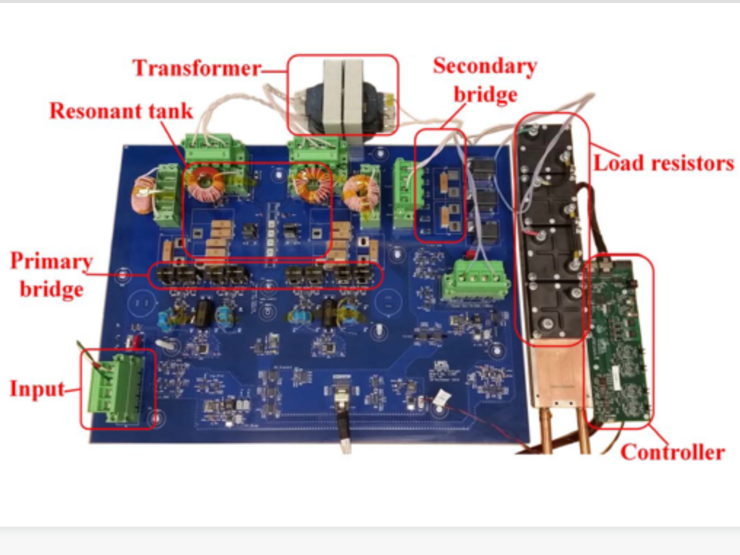DC Power Supply from a Constant Current Source
For certain direct current (DC) power applications, series resonant converters (SRCs) are preferred over cable transmission to supply power. Researchers from Utah State University analyzed the topology and steady state of a series resonant converter with constant current input. A system and design for an SRC was formulated to create a power supply with a natural current/voltage source behavior using a constant current input.
Problem
Output power from an SRC with constant current input cannot be controlled below a minimum value for either output current or output voltage. In such cases, a traditionally designed SRC may result in a nonexistent steady state solution beyond a certain operating point.
Solution
A new design for an SRC with constant current input ensures that the steady state solution exists for the required range of load conditions. In response to a steady state analysis of an SRC with constant current input, the resonant tank parameters were designed to force the input voltage down which changes the load range. These changes allow the SRC to control the input and output current and power at low levels.
Benefits
The new design allows for an SRC with the ability to provide long distance DC power without cable loss; multiple SRCs can easily be paralleled without control for balanced current sharing due to their inherent current source behavior. A switch at the input of the converter that has a by-default short-circuit behavior gives the SRC out-current regulating capability, and a DC current power supply controller is configured to control the output current and protect the converter under abnormal operating conditions.
Applications
Typical DC-DC power converters are used in a variety of applications including power supplies for personal computers or laptops, office equipment, telecommunications equipment, and even spacecraft power systems. This specific SRC can be applied in a variety of ways but was designed particularly for underwater power application using DC current distribution – rather than DC voltage distribution – because of potential long distances and cable loss.

Contact
Questions about this technology including licensing availability can be directed to:
Alan Edwards, MA, JD
Manager, Technology Transfer Services
(435) 797-2328 alan.edwards@usu.edu
Inteum ID
17033
Inventors
Regan Zane, Ph.D.
Electrical and Computer Engineering Dept.
Hongjie Wang, Ph.D.
Electrical and Computer Engineering Dept.
Tarak Saha, Ph.D.
Electrical and Computer Engineering Dept.
Development Stage
TRL 4
Patent Status
Patented

